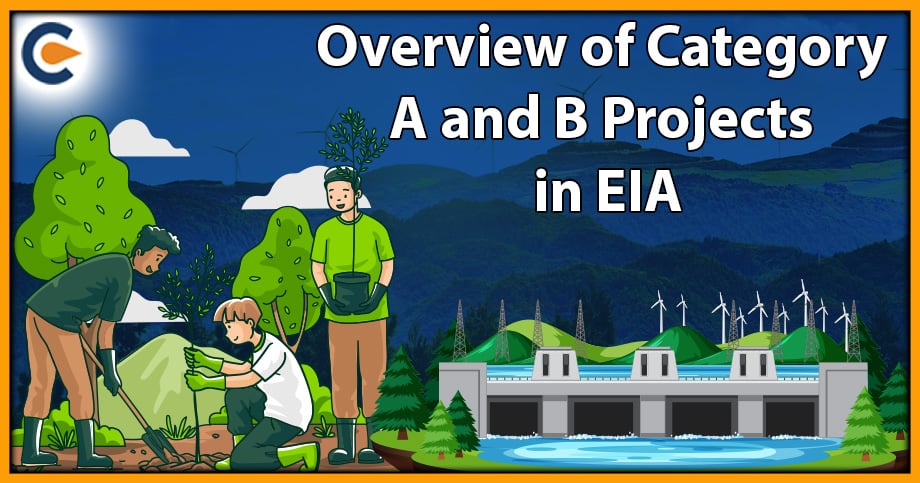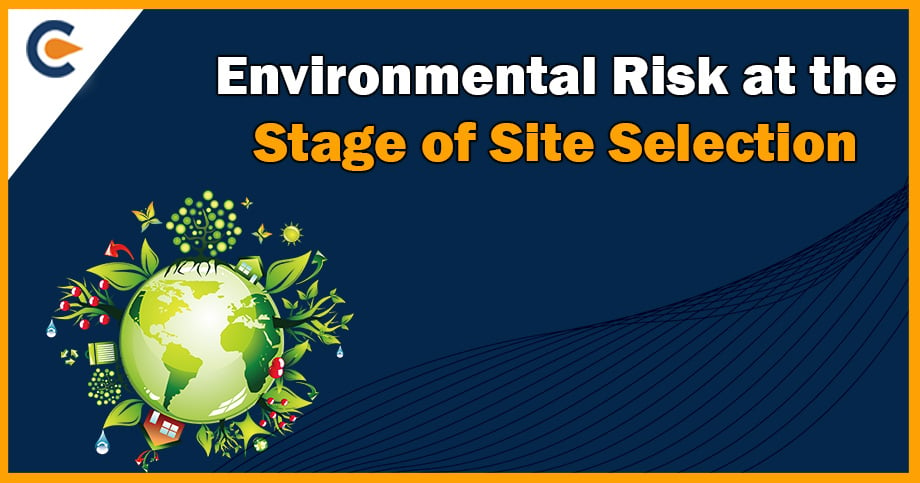An Environmental Impact Assessment (EIA) is a process that evaluates the possible environmental implications of a proposed project or development, taking into consideration interconnected socioeconomic, cultural, and human-health aspects, both positive and negative. Environmental Impact Assessment (EIA) is a critical management tool for ensuring the most efficient use of natural resources for long-term development. The EIA Notification 2006 divides the projects into Category A and B projects in EIA based on their size and impact on natural and artificial resources. Category A projects require approval from the MoEF (Ministry of Environment and Forests), based on the advice of an Expert Appraisal Committee (EAC); for example, building or expansion of ports, harbours, airports, nuclear power and related projects, primary metallurgical industries (iron, steel, copper, and so on), individual projects mining initiatives, and other areas of growth. The Environment Protection Act 1986, which contains numerous sections on EIA methodology and procedure, provides legal support for environmental impact assessment in India.
Aim of EIA
The aim of differentiating Category A and B projects in EIA is to forecast environmental consequences early in project planning and design, to discover ways and means to limit negative impacts, to adapt projects to fit the local environment, and to give predictions and choices to decision-makers.
EIA investigates both the positive and negative repercussions of the project and guarantees that these effects are considered throughout project planning.
It assists in identifying potential environmental consequences of the planned project, provides mitigation strategies, and forecasts if substantial unfavourable environmental effects will occur even after mitigation measures are applied. Environmental assessment offers several benefits, such as environmental protection, optimum resource use, and project time and cost savings, since it considers the environmental consequences of the project and their mitigation during the project planning cycle.
An adequately conducted EIA also reduces disputes by encouraging community engagement, educating decision-makers, and laying the groundwork for ecologically sound initiatives. The advantages of Category A and B projects in EIA have been shown at all project stages, from exploration and planning to building, operations, decommissioning, and beyond site closure.
Applicability of EIA in India
EIA was initially established in 1978 for different river valley projects around the country and eventually broadened its scope to encompass numerous additional developmental operations. Currently, EIA is needed for approximately 30 distinct types of projects.
The Environmental Protection Rules of 1986 permit the imposition of specific limits on land development, growth, use and modernization of particular projects without the prior approval of the EIAA established under the Environment Protection Act, 1986 at the Central, State, or Union Territory level.
Distribution of Category A and B projects in EIA Projects
The EIA Rules divide the projects into two categories, A and B, based on their size and impact on natural and artificial resources.
- Category A projects require permission on behalf of the Central Government from the Ministry of Environment and Forests, based on the opinion of an Expert Appraisal Committee (EAC) created by the Central Government for this particular purpose. For example- harbours, airports, nuclear power and related projects, individual projects, construction or expansion of ports, primary metallurgical industries (like steel, iron, copper), etc.
- Projects falling under Category B require the approval of a State EIA, based on the opinion of a State Expert Appraisal Committee (SEAC) formed in the EIA Notification 2006.
Notification, 2006, For Category A and B Projects in EIA
Category B includes initiatives that are less in size or capability and have more minor consequences than Category A. Environmental clearances are provided at the state level for Category B projects. As the law requires, each state has a designated agency or board that grants the Clearance
The objectives of the EIA Notification are as follows: –
- To build a transparent, decentralized, and effective regulatory structure to integrate environmental issues into the development process to promote long-term growth.
- Ensuring the implementation of appropriate environmental protections at the planning stage of the project cycle to guarantee minimal effect on various environmental components.
- To guarantee stakeholder participation in public consultation through public hearings and to determine public opinion on the proposed project or activity.
The Salient Features Of EIA Notification Are:
- The EIA Notification, 2006 divided projects into Category A and B projects in EIA.
- Category A projects require environmental approval and do not undergo the screening procedure.
- Category B projects undergo a screening procedure
and are divided into two groups.
- Category B1 projects require EIA (compulsory).
- Category B2 projects do not require EIA.
- As a result, Category A and B projects in EIA go through the whole EIA procedure, whereas Category B2 projects are exempted.
- The public consultation procedure has been improved. It consists of two parts: written comments and a public hearing on-site. A provision has also been created to videotape the public hearing proceedings.
- NOCs (No-Objection Certificates) from other regulatory authorities, such as the SPCB, are not required before applying for environmental clearance.
Draft EIA Notification 2020
The Ministry of Environment, Forests, and Climate Change (MoEF&CC) has released the draught Environment Impact Assessment (EIA) Notification 2020, which would replace the prior EIA Notification, 2006, under the Environment (Protection) Act, 1986[1].
The following are the Key Proposals of the 2020 Draft:
- Reduced Time for Public Hearings: Public involvement is essential in the EIA Mechanism. The proposal for 2020 suggests reducing the notice time for public hearings from 30 to 20 days.
- However, the MoEFCC claims to be “up to date” with the internet and mobile telephony expansion.
- Project Exemption: Furthermore, by categorizing many projects as A, B1, and B2, many projects are shielded from public scrutiny.
- Unlike Category A and B1 projects in EIA, Category B2 projects do not require obligatory Environment Clearance (EC).
- Exempted Projects: This category includes
offshore/onshore oil, gas, and shale exploration projects.
- Hydroelectric plants with a capacity of up to 25 MW.
- Irrigation projects range from 2,000 to 10,000 hectares in size.
- Small and medium-sized cement factories.
- Sulphuric acid, acids other than phosphoric or ammonia.
- MSMEs in dyes, dye intermediates, bulk pharmaceuticals, synthetic rubbers, and medium-sized paint operations.
- All inland waterway projects and roadway development or widening between 25 and 100 kilometres with prescribed requirements.
- These include highways that cut across woods and river dredging.
- Aerial ropeways in environmentally sensitive places.
- Projects for specified building construction and area development; built-up area up to 1,50,000 sq. m.
- Post-clearance compliance: Once the relevant authorities have cleared a project, the proponent projects must follow specific guidelines outlined in the EIA report to guarantee that no more environmental damage occurs.
- Annual Report Submission: The current draught EIA recommends annual compliance report submission, whereas the 2006 notice required compliance reports to be filed every six months.
- Environmental experts believe that extending the deadline for completing the compliance report will allow project proponents to conceal potentially severe repercussions.
- Post-facto Clearance: A significant suggestion in the draught 2020 is to provide ‘post-facto approval,’ which allows projects operating without environmental clearance to be either regularised or permitted to seek clearance.
- Penalty for Firms: Firms caught breaking the terms of their establishment will have to pay a fine if they need to get approval.
Conclusion
An EIA is developed to assess the environmental impact of a proposed development or construction project. Environmental Impact Assessments were first used in the 1960s to raise environmental awareness. EIA provides technical assessments designed to aid in more objective decision-making. In Category A and B projects in EIA, all physical infrastructure projects in category A exceed the specified minimum size and expense thresholds outlined in the Schedule. These projects’ environmental clearances are issued at the central level. Ports, roads, water and sanitation, urban transportation, and solid waste management are all examples of physical infrastructure projects. EIAs are increasingly being utilized over the world. Every year, the number of environmental assessments filed “has greatly outnumbered the number of more rigorous Environmental Impact Statements”.
Read Our Article: Environmental Clearance Process In India: A Complete Outlook











